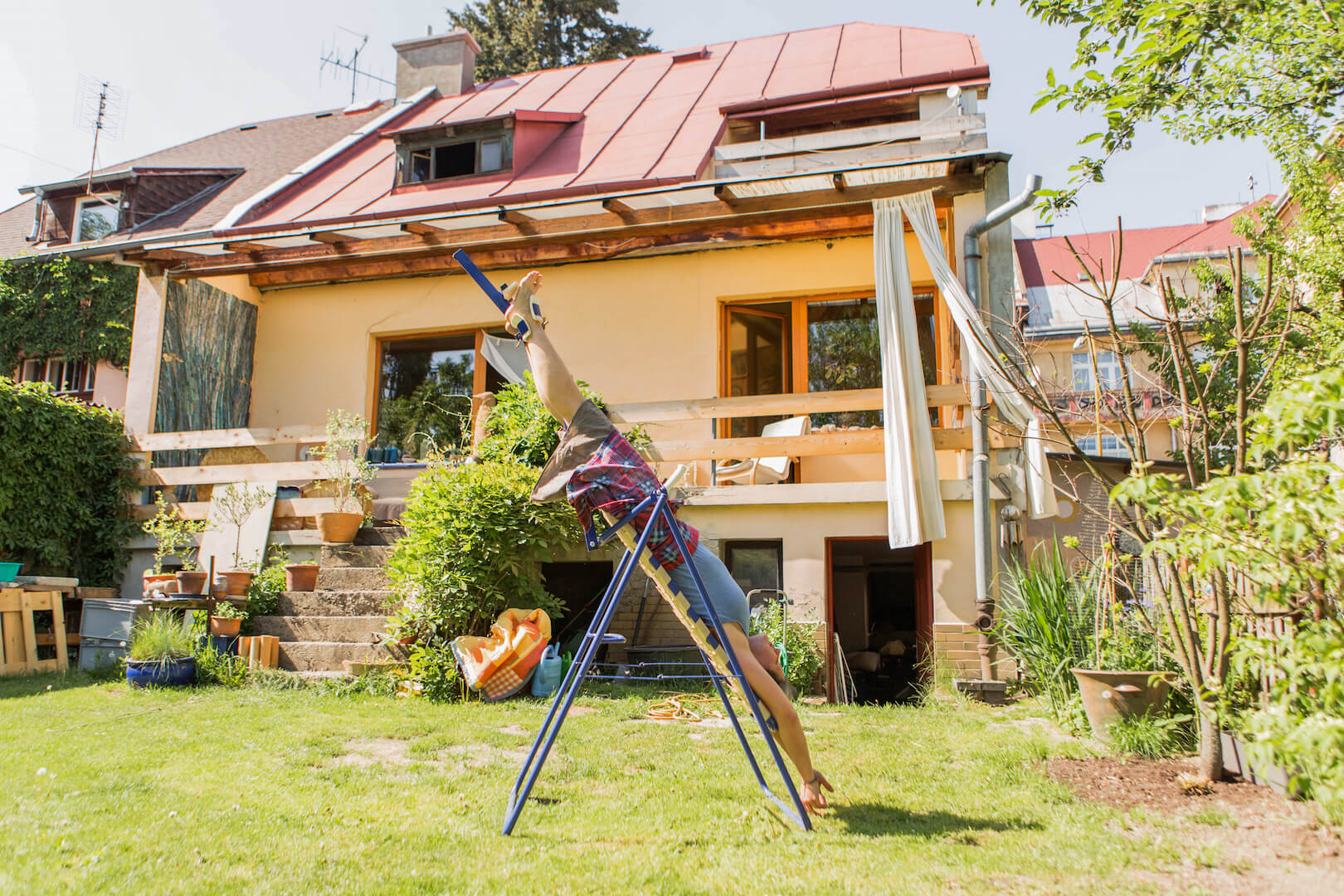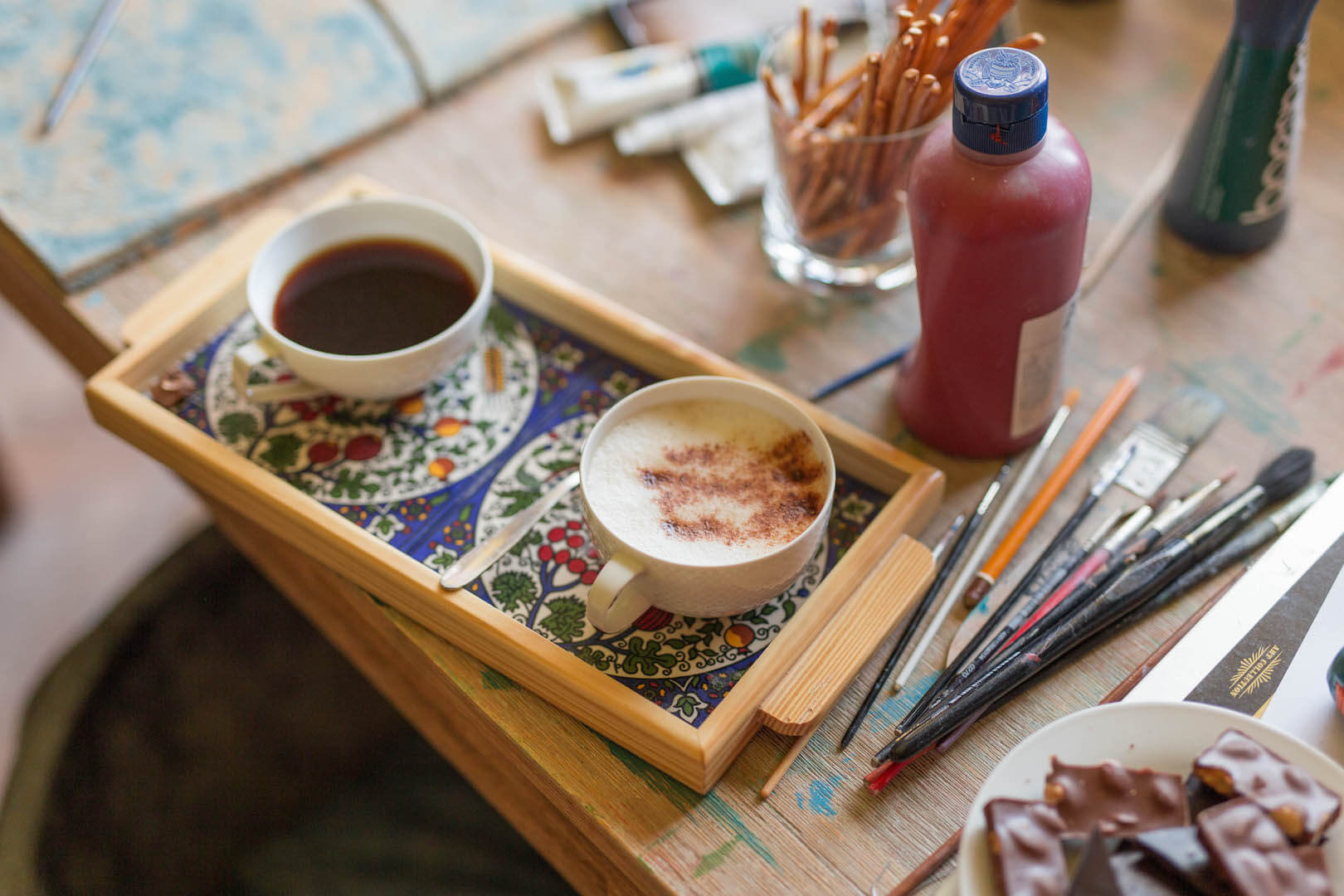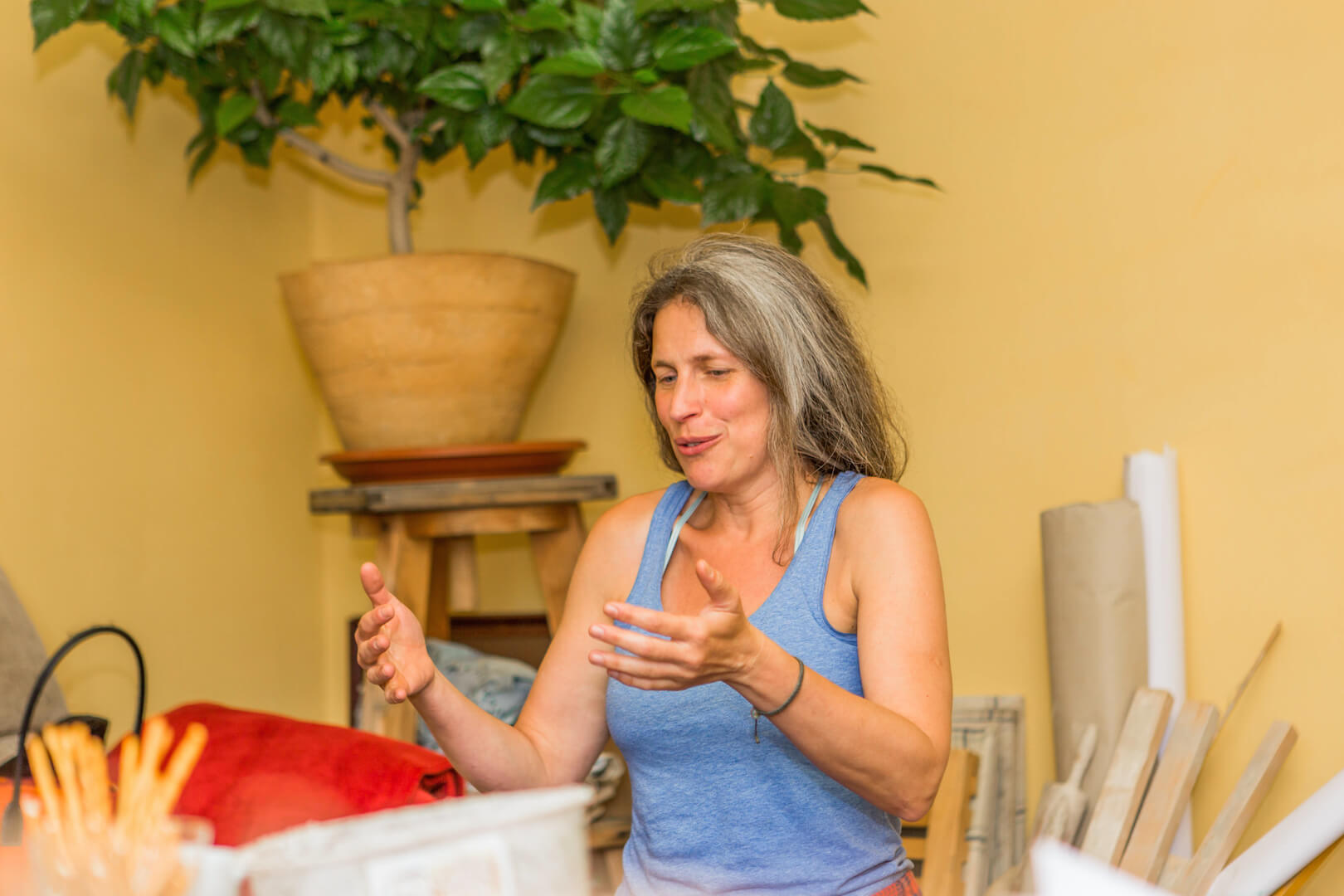Come to Košice, Camino de Santiago is here. And we also belong to the European pilgrims’ network
Well-known not only in Košice but abroad as well, Andrea Čepiššáková has dazzled her audience by ceramic artwork for several years. We wanted to see Andrea from the other, unknown side. And so the following interview uncovers her face in the role of a pilgrim and an alternative educator for children.
Andrea, we’re sitting in your studio surrounded by loads of books, paintings and other stuff. What is it that you actually do?
I believe that everyone is essentially a pilgrim in a sense. It’s important to remain balanced when connecting profession and mundane, everyday life. Each day is about searching for balance for me, it’s the same when I ride a bike. I always have to keep the stability between the roles of mother, house-wife and creative being. Lately, I’ve been working with sister Mary who lives in Munich. She finished her studies at the Academy of Arts and started in her own studio. Similarly, she also combines her own artwork with children’s education.
So you are all of these roles – a pilgrim, mother and an artist.
Pilgrimage has definitely become a powerful sense in my life and that primarily six years ago when I went for the first Camino de Santiago with my husband. Since then, I did it two more times. We were also fortunate to open St James’ route here in Košice – from St Elisabeth’s Cathedral to Levočská hora. Not many people know that Košice used to be a famous pilgrims’ destination during the medieval period, Austro-Hungarian kings would often journey. However, the general travelling seems to be associated with an arranged trip and schnitzels – ideally, if a bus takes us right below the hill and we just hike a bit from there. But there is also an option to walk the nature in solitude, only with a backpack. One calms down and seeks for oneself. Coexists and finds links with the environment, people, in silence and some sort of slow-down.
So you have decided to go on Camino de Santiago in order to create something similar here in Slovakia?
Not really, we went independently of that plan. It is said that there are three pilgrims’ destinations in the world. Who seeks for the Church/religion, goes to Rome. For Christ, goes to Jerusalem. And the one who is looking for himself/herself goes to Compostela. Paulo Coelho also mentions Santiago de Compostela in his books a lot. That’s what got me going. After walking the route, I would prescribe it to everyone as a compulsory activity to cleanse one’s mind and soul.
How long did you walk?
The first time we went, we took the shortest Portuguese Way. We walked around 25-30 kilometres a day. In the end, we arrived at Finisterra cape which was once considered to be the edge of the flat Earth – you can only see the Atlantic Ocean from that point. Pilgrims leave their clothes and shoes here so as to get rid of symbolic burdens. When we got back, all I could think about was how cool it would be to make something similar in Košice. A month later, Eva Kocanová and Slavo Engel called. They are pilgrims in the organization Friends of the Way of St James in Slovakia. We decided to mark the first phase from Košice to Levoča. The passage from St Elisabeth’s Cathedral to Levoča is ready to use and takes around three days to complete. Accommodation at Lajoška is available and information leaflets can be found in the information centre. You can buy the credential as well as stamps in the church of St Elisabeth’s Cathedral.
Tell me something about you in the role of an artist. What steps led to your relationship to art?
I was brought up in a creative environment. My grandfather was a wood-carver and my dad painted so I always remember my childhood with the scents of oil paints and linden saws. Freedom of speech seemed essential for us and that despite the regime we lived in. My father supported me in everything – we could draw on walls, install nails inside our parquets and a lot of other stuff. We also travelled by trailer frequently. To get out during socialism and see new countries, ranges, horizons – I would often think about them long after in the silence of our studio. It is extremely enriching to see different options. My parents ensured me it would be hard to live as an artist. I decided to study ceramics and design at Universität für Angewandte Kunst in Vienna anyway. When they opened a ceramics programme in Bratislava, I moved and changed my studies. That is where I got a unique opportunity to go to Mexico. We lived among Indian tribe Tarahuma members in Jesuit mission and restored paintings as volunteers. We helped to build a museum devoted to the art of the 17th-18th century. Jesuits have created these missions in order to help indigenous tribes living in remote areas. They educate them, offer lawful insights, medical assistance, build schools.


Besides cooperation for St James’ net here in Slovakia, you’re known for working with children. What are your impressions from this job?
I see an incredible uniformity in the final works of kindergarten kids. Our school system does not make children think anywhere near creative level. We don’t teach to be unique, original, or to express one’s opinion, attitude. I am not a traditional teacher, children come here individually. I co-work with one psychologist who sends me children with a lot of different medical problems. With my husband, Paľo Pekarčík, we evolved ‘creative clubs’ after school where we try to teach them to perceive things from a creative angle. Starting with physics and history, the goal is not to be scared to ask, to be open, to express individuality and think on the interdisciplinary level. The basic problem in Slovakia or any post-socialistic country is the fear to differ.

What principle or concept are you trying to bring into your form of education?
Constant pondering about one’s own emotions is too self-centred – a lot of artists around me are like that and I consider it a waste of talent. I believe that we are here in order to help others, to use the gift and talent all of us have for helping the society to move forward collectively, not as an individual. I found out that the key is to help people get open. I believe it and see how just a single visit of a studio or the confrontation with freedom makes a change. I work with parents and psychologists. A lot of medically handicapped children come here. Most of the time it is not really about creating something artistic – sometimes we just plant peas in the garden, play badminton, sew toys from old cloths, take landscape pictures when on a walk or read books and dance salsa.
What’s the outcome of combining your own projects and work with people, children?
It’s about balance – when I get overwhelmed and exhausted from working with people, I need to dive into depth, to be by myself. But one cannot stay there for too long. Everything discovered somewhere deep down has to get out. I also enjoy any kind of movement. Sport is not really popular activity among artists but I couldn’t do without it – I cannot survive without swimming, cycling or long walks. I like all kinds of movement in nature. It strengthens body and soul at the same time. And this has been going on for all my life. So far.
Andrea Čepiššáková
Born in 1973, Stará Ľubovňa and living in Košice, Andrea Čepiššáková takes her inspiration from several diverse experiences of her life. Wood-carver’s grand-daughter and painter’s daughter has always been close to the freedom of expression and new horizons in relation to frequent travelling since her very childhood. She exchanged studies at Universität für Angewandte Kunst in Vienna for ceramics in Bratislava. Right here, she was given an unforgettable opportunity to go to Mexico where she restored paintings among members of the Indian tribe Tarahuma in Jesuit mission. She is one of the co-founders of citizen’s association called Vnútorný priestor which maps contemporary art in relation to spiritual searching for oneself.
She is also behind another association Friends of Camino de Santiago in Slovakia which intends to build a pilgrims’ route in Slovakia and become a member of European Camino de Santiago network. She attends and participates at several sculpture symposiums such as in Žiaromat a.s. Kalinovo which has been helping to enrich the ceramics collection of Slovak artist for the past thirty years, also with the assistance of Novohrad Museum and Gallery Lučenec. This is where she finds inspiration for working with an industrial shamot material and is now working with her own technique called tattooing. Together with her husband, they spend a lot of their time with art therapy and creative education for children. Andrea’s artwork might be seen in Slovakia, but also abroad. Many of her ceramic art pieces are included in various collections.
All set to explore Andrea’s ceramic objects? One of them is waiting for you in the room designed by The Invisible Hotel. Make the most of your Košice visit. Get it now.











